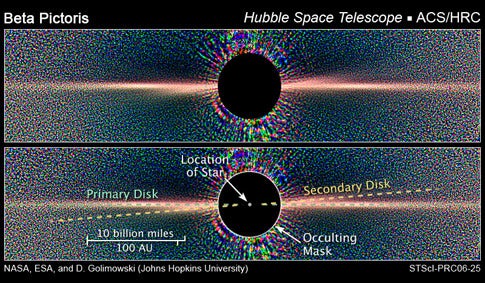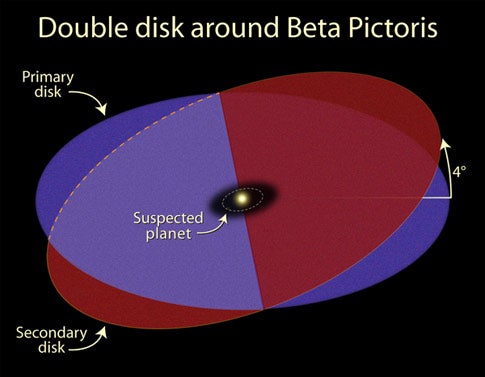Scientists using the Hubble Space Telescope’s Advanced Camera for Surveys imaged a second disk of dust surrounding nearby star Beta Pictoris. The second disk is inclined 4º to the main disk and probably harbors a Jupiter-size planet; the unseen planet’s gravity likely is sweeping up material from the main disk into a tilted orbit.
For a decade, astronomers had suspected a warp in the star’s primary disk indicated a second dust ring. Earthbound telescopes first imaged the star’s dust disk in 1984, but a 1995 Hubble image showed a warp in the disk, which is seen nearly edge-on from our perspective. The new images employed a coronagraph to block the star’s overwhelmingly bright light to reveal the fainter, second disk.
“The finding suggests that planets could be forming in two different planes. We know this can happen because the planets in our solar system are typically inclined to Earth’s orbit by several degrees. Perhaps stars forming more than one dust disk may be the norm in the formative years of a star system,” says lead astronomer David Golimowski of Johns Hopkins University in Baltimore.
The discovery appeared in the June 2006 Astronomical Journal.











